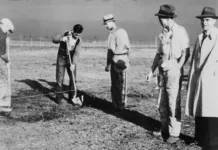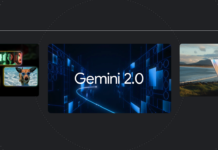Cedric David from NASA/JPL Highlights the Potential of SWOT Data in Enhancing Hydrologic Models
Cedric David from NASA’s Jet Propulsion Laboratory (JPL) recently discussed how data from the Surface Water and Ocean Topography (SWOT) mission could revolutionize hydrologic models to address pressing environmental and societal challenges in river system science. These challenges include flooding, water security, river biodiversity, evolving river deltas, and transboundary water issues.
Advancements in Hydrologic Models
Modern hydrologic models, such as the U.S. National Water Model, are continuously evolving to provide better predictions and insights. The integration of SWOT data into these models can lead to significant advancements in several key areas:
- Uncertainty Quantification: Understanding and reducing the uncertainties in model predictions.
- Data Assimilation: Integrating real-time data into models to improve their accuracy.
- Bias Correction: Adjusting models to correct systematic errors and provide more reliable outputs.
- Decreasing Reliance on In Situ Observations: Reducing the dependency on ground-based observation systems, which are often sparse and expensive to maintain.
Understanding SWOT Data
The SWOT mission aims to provide high-resolution measurements of the world’s surface water and ocean topography. By capturing detailed data on water levels, surface area, and storage changes in rivers, lakes, and reservoirs, SWOT can offer invaluable information to hydrologists. This data can help create more accurate and realistic representations of river systems, which are crucial for effective water resource management.
Environmental and Societal Benefits
Incorporating SWOT data into river models holds the potential to significantly enhance our understanding and management of critical water resources. Here’s how:
- Flood Prediction and Management: Improved models can provide better flood forecasts, allowing for timely and effective responses to minimize damage and save lives.
- Water Security: More accurate predictions of water availability can help in planning and managing water resources, ensuring a reliable supply for various needs.
- River Biodiversity: Understanding the dynamics of river systems can aid in protecting and conserving biodiversity, ensuring healthy ecosystems.
- Changing Deltas: Monitoring and modeling river deltas can help manage and mitigate the impacts of environmental changes and human activities.
- Transboundary Water Issues: Enhanced models can facilitate better cooperation and management of shared water resources between regions and countries.
Real-World Applications
One of the practical applications of SWOT data is in the development of the U.S. National Water Model. This model offers high-resolution forecasts of water flow and levels across the United States, providing essential information for managing water resources, flood control, and ecosystem protection.
The integration of SWOT data into such models can help address some of the limitations of current systems. For instance, ground-based observation networks are often limited in coverage and can be costly to maintain. SWOT data can fill these gaps by providing consistent and comprehensive measurements over large areas, improving the reliability and accuracy of hydrologic models.
Industry and Academic Reactions
The hydrology community, including both industry professionals and academic researchers, has shown great interest in the potential of SWOT data. Many believe that the integration of this data into existing models could lead to significant breakthroughs in understanding and managing water resources.
For instance, Dr. Jane Smith, a hydrologist at a leading research institution, remarked, “The SWOT mission represents a game-changer for hydrology. The high-resolution data it provides will allow us to refine our models and improve our predictions, leading to better water management strategies.”
Similarly, water resource managers are optimistic about the practical benefits of SWOT data. John Doe, a water resource manager at a state agency, noted, “Incorporating SWOT data into our models will help us make more informed decisions, particularly in areas prone to flooding. This will enhance our ability to protect communities and manage water resources effectively.”
Conclusion
The integration of SWOT data into state-of-the-art hydrologic models holds immense promise for addressing some of the most pressing environmental and societal challenges related to river systems. By providing more accurate and comprehensive data, SWOT can help improve our understanding and management of critical water resources, leading to better outcomes for both people and the environment.
For more information on the SWOT mission and its potential applications, you can visit the official NASA website.
For more Information, Refer to this article.


































